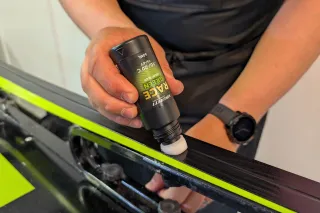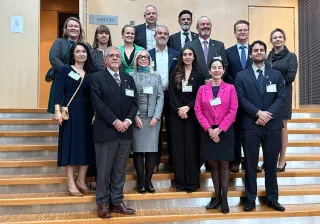During the past five years, the price of CO2 emissions in the European Union Emissions Trading System (EU ETS) has increased over ten-fold from 9.81 €/tCO2 (23.2.2018) to 101.83 €/tCO2 (21.2.2023)(1). This has major implications for the industries that are part of the EU ETS, like the energy, cement, lime, steel and petrochemical industries.
Whereas the cost of releasing emissions is a significant financial burden, avoiding and removing the emissions becomes a more feasible business. This is a significant driver for the development and implementation of CCUS in the EU ETS sector, as the typically most expensive part of capturing the CO2 has costs ranging from 15-120 USD/tCO2(2). This is seen in the global growth of carbon capture and storage projects: the capacity of operational and planned facilities has increased from about 70 MtCO2/yr in 2018 to about 240 MtCO2/yr in 2022.(3)
What are CDR and CCUS?
CDR or carbon dioxide removal refers to methods, which remove CO2 from the atmosphere and store it for long periods of time (decades at least). Examples include forest management, biochar production, direct air carbon capture and storage (DACCS) and bioenergy with carbon capture and storage (BECCS).
CCUS or carbon capture, utilization and storage means processes, that capture CO2 from any source (including industrial emissions or air) and use or store the CO2. Examples include CO2 capture from e.g. power plants and conversion into fuels or chemicals. Such processes can involve hydrogen production with renewable electricity. Other examples include permanent storage of fossil CO2 from the industry, but also BECCS and DACCS.
At the same time, voluntary carbon offsets have become more popular and a company claiming itself ‘carbon-neutral’ is not unusual. Finnish voluntary CO2 compensation service providers sold compensations for 306 000 tCO2 in 2020(4) with an average price of 22 €/tCO2e.(5) However, the actions behind the claims have received criticism that sometimes for example by protecting forests in unfavorable locations from the logging perspective, nothing additional is achieved. Or in the case of renewable energy projects substituting fossil energy – would this not occur without me funding it? This has led to the requirements of measurable, additional, long-lasting and sustainable, when it comes to CO2 removals. These are also the cornerstones of the criteria in the proposal by the European Commission for the certification of carbon removals.(6)
The increasing scrutiny gives credibility, but also the market opportunity to offer more sustainable technology-intensive CO2 removals. For instance, in the Finnish puro.earth market focusing on CO2 removals, the price range is between 20-535 €/tCO2e, the high end offering CO2 removals based on certified biochar production.(7) But for now, the global carbon dioxide removals are dominated by actions like forest management(8) or the production of wood products: of the annually removed 2 GtCO2, only about 0.1% is BECCS, biochar and other novel technologies.(9)
One might wonder why there is no BECCS in Finland, when there is market demand and prices that could cover even the higher price estimates between 30-400 USD/tCO2(10) avoided? A significant, if not the most significant, factor is the insecurity of the investment landscape for carbon dioxide removals. To understand its importance, the scale of the process must be considered. For example, a single BECCS plant could capture one or half a million tons of biogenic CO2 from a pulp mill recovery boiler every year. The CO2 would be transported to a suitable storage site by ships or pipelines, stored permanently for example in a suitable geological formation, and monitored for centuries to secure there are no leaks. But how much is a million tons (Mt) of CO2? For comparison, about 0.6 Mt/yr of plastics were used in the whole of Finland(11), and the entire cement production in Finland is about 1.5 Mt/yr(12). Processes in the scale of millions of tons per year require large industrial equipment and thus large investments. With CDR it is also part of the quality criteria to secure the CO2 removals for decades or more – but also the financial security of decades. As biogenic emissions are not part of the EU ETS, it does not provide financial incentive for BECCS. Voluntary CO2 removal markets are small (~0.3 Mt CO2e/yr in Finland) and volatile for the scale of BECCS investments. Sweden has their own reverse auction state aid for BECCS coming up in 2023.(13) We could learn from this, that national actions can significantly affect the market of CDR.
How much CDR will be deployed in Finland?
It is clear that in order to achieve climate goals globally, rapid reductions and removal of greenhouse gas emissions are needed in all sectors. This includes the adoption of novel technologies like CCUS and CDR. In the scenarios limiting global warming to 1.5°C, global BECCS and DACCS based CO2 removals should be 30 000 - 780 000 Mt and 0 - 310 000 Mt during this century.(14) Recent scenario work for Finland indicates CCS (mainly BECCS) implementation of around 9 MtCO2/yr in Finland by 2050.(15) In biochar production Finland is already taking a significant role, but when it comes to CCS, it seems other Nordic countries are taking the lead(16). We could also deliver world-class DAC technology(17) to extend the carbon handprint of Finland to the gigaton (1000 Mt/yr) scale, even if the capture facilities were deployed elsewhere.
If Finland was a sustainable company claiming to become carbon-neutral, it would seek to reduce and remove not only its direct emissions – but also compensate its indirect emissions, like those of imported products and raw materials. CDR gives us the tools to do that, but we need to create a functioning market for it to happen.
This blog post is part of the Carbon Dioxide Use and Removal project funded by the Prime Minister’s Office, Ministry of the Environment and Ministry of the Economic Affairs and Employment of Finland. Should you like to know more about CCUS and CDR, please join the final seminar of the project at Tiedekulma Stage, Helsinki on March 29th, 2023 at 9-11 EET. It will be a hybrid event, and a link for the online event will be added on this event page. You can also find the programme there. While waiting for the event, have a look at our previous blog post here and read more about Negative Emission Technologies.
References
(1) Trading economics. EU Carbon Permits 2023. Data - 2005-2022 Historical - 2024 Forecast - Price – Quote. https://tradingeconomics.com/commodity/carbon (Accessed 21.2.2023)
(2) IEA, Levelised cost of CO2 capture by sector and initial CO2 concentration, 2019, IEA, Paris, IEA. License: CC BY 4.0 https://www.iea.org/data-and-statistics/charts/levelised-cost-of-co2-capture-by-sector-and-initial-co2-concentration-2019 (Accessed 21.2.2023)
(3) Global CCS institute. Global status of CCS 2022. https://status22.globalccsinstitute.com/wp-content/uploads/2022/12/Global-Status-of-CCS-2022_Download_1222.pdf (Accessed 21.2.2023)
(4) Laine, A., Airaksinen, J., Yliheljo, E., Ahonen, H.-M. and Halonen, M. Vapaaehtoisten päästökompensaatioiden sääntely. Aug 8th, 2021. Ympäristöministeriön julkaisuja 2021:26. http://urn.fi/URN:ISBN:978-952-361-408-6 (Accessed 21.2.2023)
(5) Niemistö et al. (2021). Päästökompensaatiot ilmastonmuutoksen hillinnän keinona Suomessa – nyt ja tulevaisuudessa. Selvitys vapaaehtoisen päästökompensaation käytön nykytilanteesta ja odotuksista eri toimijoiden ilmastonmuutoksen hillintätyössä.
(6) European Commission. European Green Deal: Commission proposes certification of carbon removals to help reach net zero emissions. Press release, Nov 30th, 2022. https://ec.europa.eu/commission/presscorner/detail/en/ip_22_7156 (Accessed 21.2.2023)
(7) Puro.earth. CORC Supplier Listing. https://puro.earth/CORC-co2-removal-certificate/?sort_field=item_price%7Cdesc (Accessed 21.2.2023)
(8) Read more about financing forest management based CDR in Finland: Pelli, P. VTT: Hiilinielusta maksaminen voisi jopa kolminkertaistaa metsänomistajan tulot, mutta selluteollisuus kärsisi. Jan 11th, 2023, Helsingin Sanomat. https://www.hs.fi/politiikka/art-2000009319149.html (Accessed 22.2.2023)
(9) Smith, S. M., Geden, O., Nemet, G., Gidden, M., Lamb, W. F., Powis, C., Bellamy, R., Callaghan, M., Cowie, A., Cox, E., Fuss, S., Gasser, T., Grassi, G., Greene, J., Lück, S., Mohan, A., Müller-Hansen, F., Peters, G., Pratama, Y., Repke, T., Riahi, K., Schenuit, F., Steinhauser, J., Strefler, J., Valenzuela, J. M., and Minx, J. C. (2023). The State of Carbon Dioxide Removal - 1st Edition. The State of Carbon Dioxide Removal. doi:10.17605/OSF.IO/W3B4Z. https://www.stateofcdr.org/resources (Accessed 21.2.2023)
(10) Sabine Fuss et al 2018 Environ. Res. Lett. 13 063002. https://iopscience.iop.org/article/10.1088/1748-9326/aabf9f (Accessed 21.2.2023) 30-400 USD ~ 27-370 €.
(11) Finnish Plastics Industries Federation, “Muovit ovat monipuolinen materiaaliryhmä”. https://www.plastics.fi/fin/muovitieto/muovit/ (Accessed 21.2.2023)
(12) Finnsementti, Environmental Report, 2022. https://finnsementti.fi/wp-content/uploads/Ymparistoraportti-Finnsementti-2022-1.pdf (Accessed 21.2.2023)
(13) Swedish Energy Agency. The reversed auction for bio-CSS will be postponed. https://www.energimyndigheten.se/en/news/2022/the-reversed-auction-for-bio-css--will-be-postponed/ (Accessed 21.2.2023)
(14) IPCC, 2022: Summary for Policymakers. In: Climate Change 2022: Mitigation of Climate Change. Contribution of Working Group III to the Sixth Assessment Report of the Intergovernmental Panel on Climate Change [P.R. Shukla, J. Skea, R. Slade, A. Al Khourdajie, R. van Diemen, D. McCollum, M. Pathak, S. Some, P. Vyas, R. Fradera, M. Belkacemi, A. Hasija, G. Lisboa, S. Luz, J. Malley, (eds.)]. Cambridge University Press, Cambridge, UK and New York, NY, USA. doi: 10.1017/9781009157926.001. https://www.ipcc.ch/report/ar6/wg3/downloads/report/IPCC_AR6_WGIII_SummaryForPolicymakers.pdf (Accessed 21.2.2023)
(15) Koljonen T., Honkatukia J., Maanavilja L., Ruuskanen O.-P., Similä L., Soimakallio S. 2021. Hiilineutraali Suomi 2035 – ilmasto- ja energiapolitiikan toimet ja vaikutukset (HIISI). Synteesiraportti – Johtopäätökset ja suositukset. Valtioneuvoston selvitys- ja tutkimustoiminnan julkaisusarja 2021:62. https://julkaisut.valtioneuvosto.fi/bitstream/handle/10024/163638/VNTEAS_2021_62.pdf?sequence=1&isAllowed=y (Accessed 21.2.2023)
(16) Tynkkynen, O. and Landström, M. Miinuspäästöt - Mitä negatiivisten päästöjen tekniikat ovat ja miksi niitä tarvitaan ilmastokriisin ratkaisemiseksi? Jan 26th, 2023, Sitra. https://www.sitra.fi/app/uploads/2023/01/sitra_miinuspaastot.pdf (Accessed 22.2.2023)
(17) Elfving, J. Carbon dioxide captured from air can be put to use immediately – VTT is developing sustainable materials for capture devices. Dec 12th, 2022, VTT. https://www.vttresearch.com/en/news-and-ideas/carbon-dioxide-captured-air-can-be-put-use-immediately-vtt-developing-sustainable (Accessed 22.2.2023)





